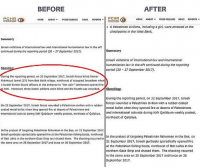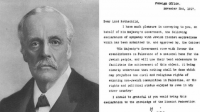
Links
Sheba Medical Centre
Melanie Phillips
Shariah Finance Watch
Australian Islamist Monitor - MultiFaith
West Australian Friends of Israel
Why Israel is at war
Lozowick Blog
NeoZionoid The NeoZionoiZeoN blog
Blank pages of the age
Silent Runnings
Jewish Issues watchdog
Discover more about Israel advocacy
Zionists the creation of Israel
Dissecting the Left
Paula says
Perspectives on Israel - Zionists
Zionism & Israel Information Center
Zionism educational seminars
Christian dhimmitude
Forum on Mideast
Israel Blog - documents terror war against Israelis
Zionism on the web
RECOMMENDED: newsback News discussion community
RSS Feed software from CarP
International law, Arab-Israeli conflict
Think-Israel
The Big Lies
Shmloozing with terrorists
IDF ON YOUTUBE
Israel's contributions to the world
MEMRI
Mark Durie Blog
The latest good news from Israel...new inventions, cures, advances.
support defenders of Israel
The Gaza War 2014
The 2014 Gaza Conflict Factual and Legal Aspects
To get maximum benefit from the ICJS website Register now. Select the topics which interest you.
The three-state solution?
 (AP) (AP) |
The Hamas takeover of Gaza this month revealed deep fissures within the Palestinian cause. The Americans, the Israelis and the Palestinians all might like to think these divisions are temporary, but the reality is not so simple. To a large extent, residents of Gaza and the West Bank are two different peoples, and the idea of a three-state solution — Israel, plus a Hamas-run Gaza and a Fatah-governed West Bank — makes historical sense.
Gaza was, starting in the early 1800s, culturally dominated by neighboring Egypt. Though Gaza was part of the Ottoman Empire, a large number of its residents were Egyptians (and their descendants) who had fled political turmoil. The West Bank, on the other hand, became culturally and economically linked with Jordan after the kingdom’s founding in 1921. Unlike Gaza, the West Bank always has had a prosperous Christian minority, which served as an important moderating influence.
The two regions’ experiences after the establishment of Israel in 1948 also were quite different. In 1950, Jordan annexed the West Bank, granted its residents citizenship and created a bureaucratic and legal infrastructure that helped connect the West Bank with the rest of the Arab world.
The simultaneous Egyptian occupation of Gaza, however, was both careless and brutal. Gazans remained stateless and were forbidden to leave the strip. Egypt never created a Gazan civil service, placing Egyptians in charge of all civil and military posts.
Even today, the two economies are almost entirely disconnected. Gaza wallows in a poverty that has led to political and religious radicalization. In 2006, Gaza’s unemployment rate was more than 35 percent, compared to 18% in the West Bank. With the exception of the joint distribution of foreign aid and political patronage, the two regions have very little to tie them together.
However, the most important difference is the way that refugees who fled or were expelled from Israel in 1948 have assimilated. More than a million refugees and their descendants live in the Gaza Strip, making up more than 84% of the total population — and nearly 50% still live in camps.
The much larger West Bank integrated its refugees far more successfully. Only 26% of refugees are in camps there — representing less than 10% of the total population. Because they have created familial and economic ties to the West Bank, they are more rooted and amenable to political compromise.
It is conceivable, for instance, that West Bank Palestinians would give up the refugees’ right of return in exchange for Israeli territorial concessions. Yet many Gazans, who have lived in refugee camps their whole lives, are tragically, if understandably, unwilling to accept such a compromise.
The idea that national identities remain static is a late 20th century fiction. Palestinian identity has been in flux since the Ottoman period, and there is no reason to think that it is now frozen in place. Indeed, after receiving Jordanian citizenship in 1950, many residents of the West Bank came to see themselves as Jordanian. Yet following the Israeli conquest in the 1967 Six Day War, they quickly adopted a panPalestinian identity.
All that was needed for this identity to shift was a single generation severed from Jordanian power, influence and institutions. (Acknowledging that his ostensible subjects would never again view themselves as Jordanians, King Hussein renounced all claims to the West Bank in 1988.) A similar division has existed for some time between Gaza and the West Bank. As a result of Israeli travel restrictions, an entire generation of Gazans has never set foot in the West Bank, and vice versa.
In light of the current political schism between the West Bank and Gaza, Yasser Arafat’s vision of a united Palestine seems more remote than ever. It is finally time to seriously consider a threestate solution.
Israel would be able to treat Gaza as a pariah state and respond to Hamas’s rocket attacks accordingly. Israel could then await Gaza’s further descent into a quarantined chaos or the unlikely emergence of a more moderate political leadership.
West Bank Palestinians also could profit from such an arrangement. Indeed, the Israelis are already considering giving Fatah the nearly halfbillion dollars in tax revenues they’ve been withholding. Once detached from Gaza, the West Bank leadership probably could force Israel to dismantle roadblocks and evacuate settlements. Following a perverse logic, the benefits might even extend to residents of Gaza. Freed from West Bank hegemony, Gazans could live in whatever Islamist dystopia they choose.
A bifurcated Palestine ultimately might facilitate a temporary solution to the conflict: peace between Israel and the West Bank, continued fighting between Israel and Gaza. This is an admittedly partial solution, but it is better than the status quo of no solution at all. (Los Angeles Times)
Jacob Savage is a graduate fellow at the Shalem Center in Jerusalem.
# reads: 419





















